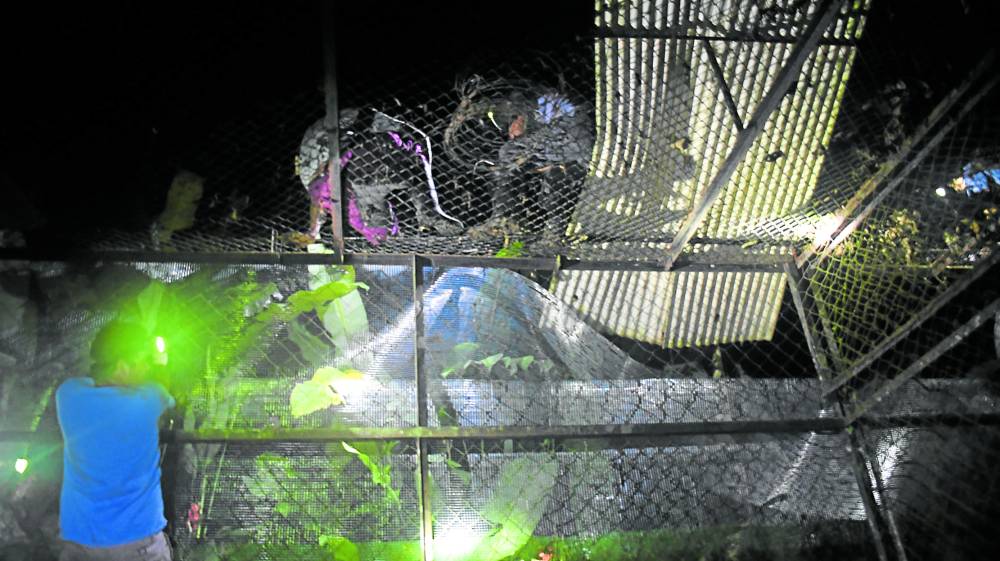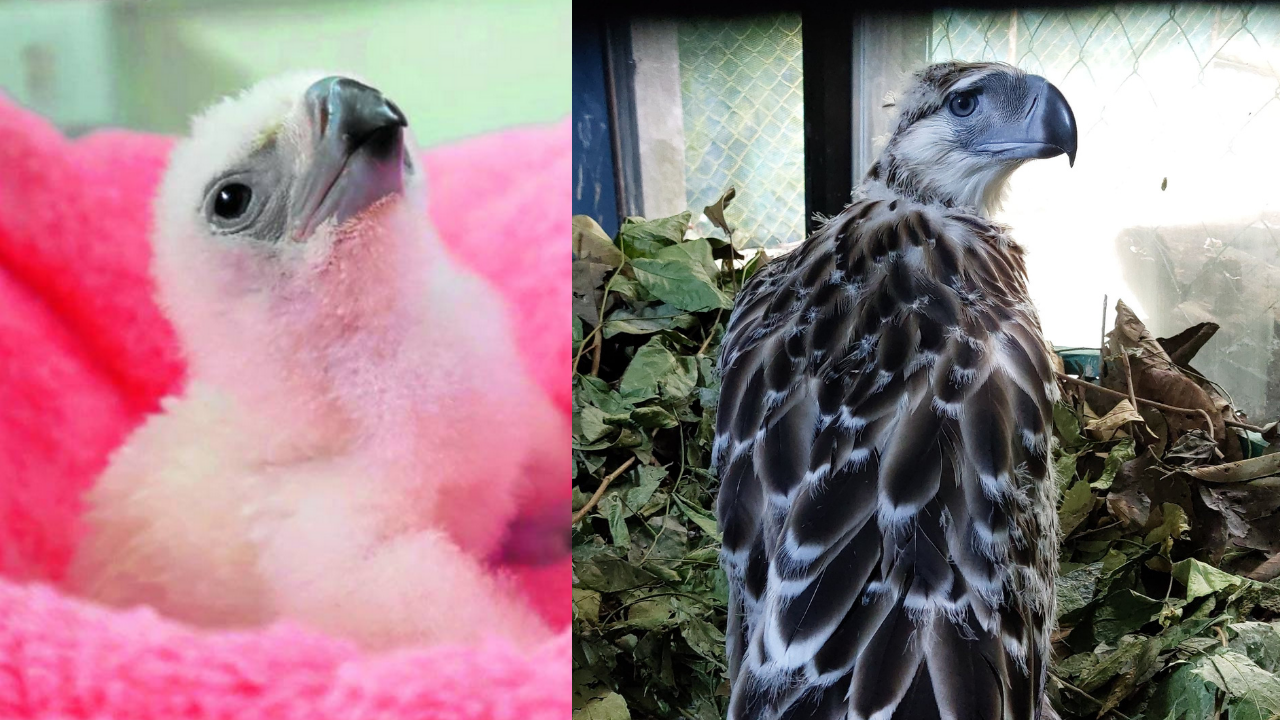Eaglet bred in captivity killed in snake attack

PRECAUTION Animal keepers at the Philippine Eagle Center in Malagos, Davao City add a new layer of protective wire mesh in the cages of eagles after a python attacked and killed Chick #29 on Tuesday morning. PHOTO COURTESY OF THE PHILIPPINE EAGLE CENTER
DAVAO CITY — A 4-month old Philippine eagle (Pithecophaga jefferyi), which had only been given the number “Chick #29,” was attacked by a python and was found lifeless on the floor of its enclosure on Tuesday morning at the Philippine Eagle Center (PEC) in Malagos, Baguio District of this city.
“We are deeply saddened by the loss of Chick #29 as so much work has been invested on him. It’s an unfortunate incident involving a natural hazard at the center,” Dennis Salvador, executive director of the Philippine Eagle Foundation (PEF), told the Inquirer.
Footage from a closed-circuit television camera installed at the eaglet’s enclosure reviewed by the PEC’s animal keepers revealed that Chick #29 was attacked by a python at 12:13 a.m.
The snake could have entered through the PVC pipe feeding chute where food is dropped in the enclosure or through the screen ceiling, according to the center.
“The enclosure is also adjacent to an adult Philippine eagle from the wild that can easily catch a snake. But unfortunately for fledglings, they are still vulnerable to predation,” the statement from the PEF said.
Salvador said they would need to mitigate the threats posed by snakes, including pythons, cobras and vipers, that are found at the Malagos Watershed Protected Landscape.
“In the midst of this tragedy, we now have to contend with the looming danger of avian flu. It is a clear and present danger that could potentially wipe out our entire breeding stock,” he added.
Snake proofing

SHORT LIFE Eaglet “Chick #29” is 3 months old in this photo taken a month before a python entered its enclosure at the Philippine Eagle Center and killed it on Thursday — PHOTO COURTESY OF PHILIPPINE EAGLE CENTER
The PEF said snake proofing was done on the enclosures of eaglets and other animals that a snake could prey on. They added a layer of half-inch wire mesh on top of the original cyclone wire with hole size of 2 by 2 inches. Traps have been set up around the center and search parties mobilized at night to capture the problem snake.
According to the PEF, “reticulated pythons are natural resident species inside the [PEC] and the surrounding watershed area and are classified as hazards under the PEC’s biosecurity measures.”
The PEF operates the Malagos facility, undertaking captive breeding of the raptors as well as rehabilitating those victimized by human activities and rescued from communities.
The first captive bred eaglet was Pag-asa, which was born on Jan. 23, 1992, and died of an infection on Jan. 6, 2021. Chick #29 was hatched on Dec. 4 last year.
Philippine eagles lay an egg only once every two years, making their conservation a daunting task.
Established in 1987, the PEF is dedicated to increasing the Philippine eagle’s declining population and preserving its habitat through conservation breeding, research and education campaigns promoting their protection.
There are currently only 400 pairs of the species remaining in the wild across the country, the PEF said.